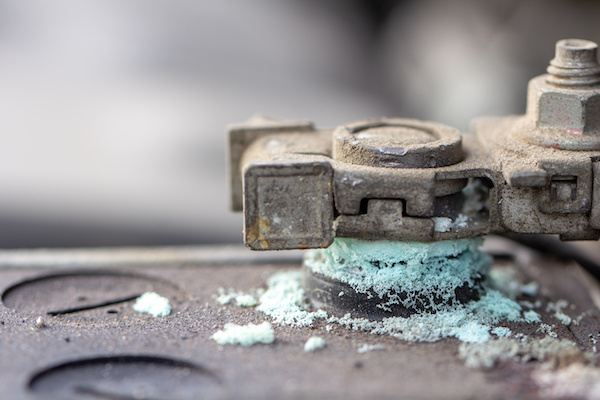
If you look at your battery and notice white, blue, or green crust on its terminals, you're dealing with a corroded battery. While you may jump the gun and assume that your battery is done for, it may only be deprived due to the poor connections. We suggest cleaning it off and retesting your battery. Either way, it is a wonderful habit to regularly clean your battery to ensure corrosive matter doesn't linger and weaken the battery's charge.
The crusty matter on your battery is called corrosion, and it is the hydrogen gas leaving the sulfuric acid within the car battery. Whenever this occurs, your battery will lose its charge. Various things can cause it:
- Exposure to salt and moisture
- Overcharging
- Age
How to Clean the Battery Terminals
Before we get into the process of properly cleaning your car battery, you will need to gather a few items:
- Gloves & eye protection
- Baking soda
- Anti-corrosion pads
- Petroleum jelly/vaseline
- Brushing tool
- Water
- Cloths
Step 1 - Disconnect the cables and always start with the negative first.
Step 2 - Thoroughly analyze the battery and all its cables. Is it swollen or cracked? Is there fraying?
Step 3 - Add a tsp of baking soda and some water to create a cleaning solution. Apply and scrub the affected areas with the brush.
Step 4 - Follow up with a rinse. Then dry with a towel. Please ensure it is completely dry before reconnecting the cables (step 6).
Step 5 - Once everything is dry, use the anticorrosive pads as a preventative measure. An alternative to terminal protectors is petroleum jelly.
Step 6 - Reconnect the battery cables, first starting with the positive wires.
For all your automotive battery and electrical services, look no further than European Auto Motors.